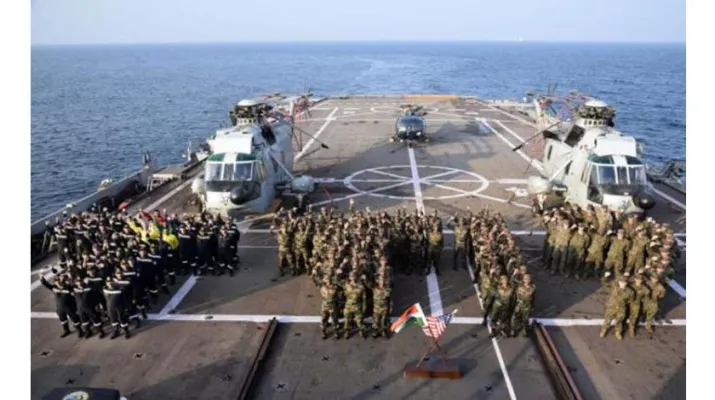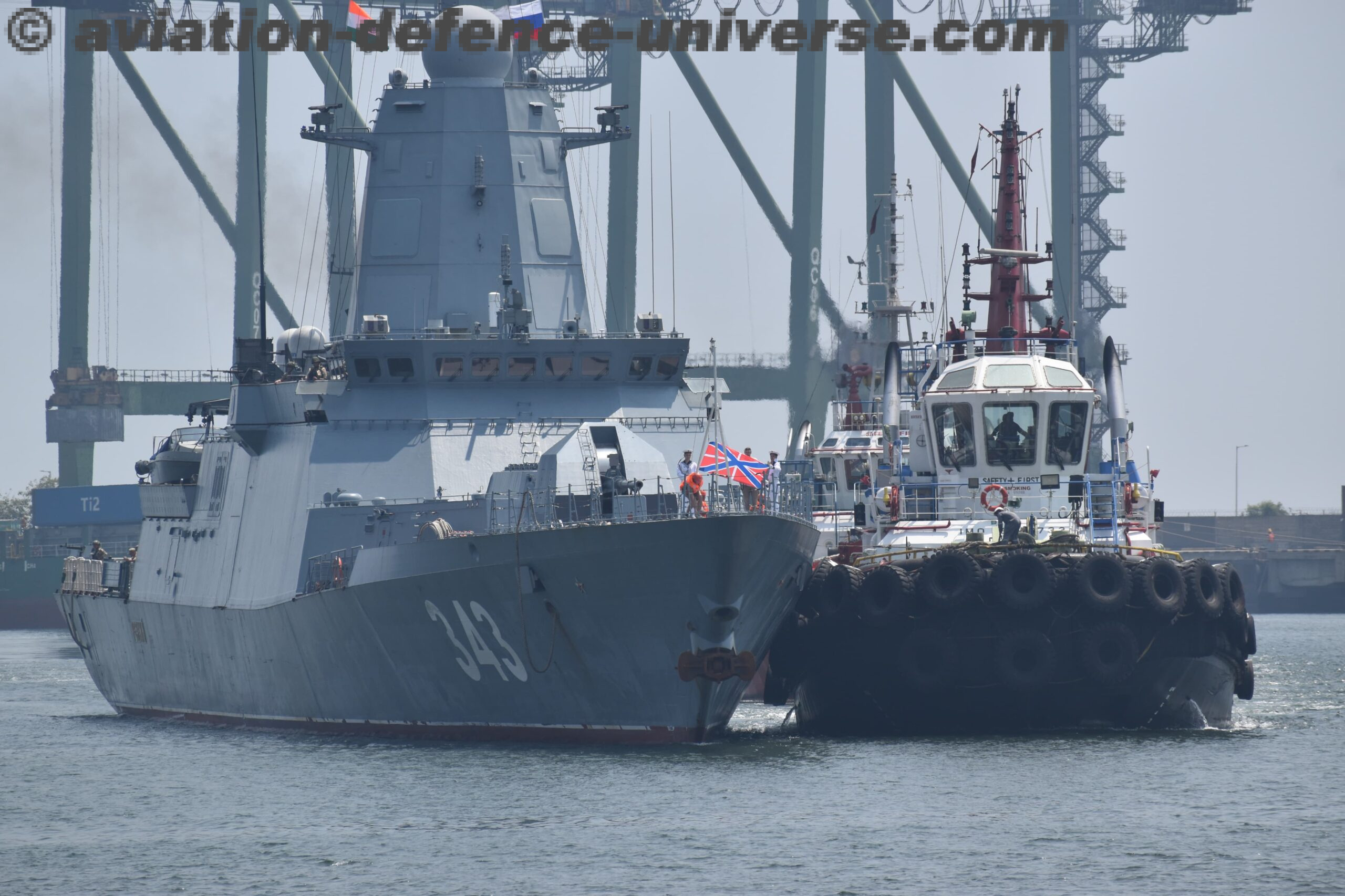By Suresh & Team
Kuala Lumpur. 24 April, 2016. DSA saw exhibitor groups clustered into 29 national pavilions and this year features a token presence among players from Azerbaijan, Bangladesh, Bulgaria, Denmark, India, Iran, Hong Kong, Monaco, Montenegro, the Philippines, and Switzerland.
Major participants from Europe and North America are out in force. These include the usual giants Lockheed Martin, Boeing, Honeywell, Textron, BAE Systems, Thales, and Finmeccanica. Russia and China are also well-represented with the latter having at least a dozen exhibitors. Malaysia, after all, is a customer for Chinese-made missile systems for its ground forces and navy.
Given the distinct absence of any firms from Israel, whose defense contractors are an indelible presence across global arms shows, DSA manages to remain inclusive for everyone else. The understated highlight for DSA 2016, given the sheer volume of exhibitors and potential deals, is the strong showing among ASEAN defense contractors from the homeland, Indonesia, Thailand, and Singapore along with nascent exporters from Turkey, South Korea, and Taiwan.
CHINA POWER
China flexed its muscles as it showcased the latest developments in defence technology. It sent a delegation of senior military and civilian officials within its large pavilion which showcased several state-owned firms and their advanced radar and communication systems, flightless aircraft, and array of other hardware.
“As an integrated defence company, we have brought unmanned arial vehicles, and anti-mine vehicles — 6×6 and 8×8 – to display, and also coastal surveillance systems. Aside from promoting our equipment in the show, we also hope to use the occasion to strengthen exchanges with our foreign counterparts for the development of civilian markets,” Mr Wang Xingye, vice president of Poly Technologies, said.
In China’s pavilion, other “big boys” like China National Precision Machinery Import and Export Corporation and CETC International also brought their latest products to the expo, to give the Western countries a run for the money.
Significantly, China also revealed a new submarine launched anti-ship cruise missile (ASCM) and provided details for an older landing craft utility (LCU) now being promoted for export. Products of the China Aerospace Science and Industry Corporation (CASIC), the new turbojet powered 290 km range CM-708UNB submarine-launched ASCM compliments the 128 km range CM-708UNA revealed at the 2014 Zhuhai Airshow.
While the CM-708UNA is likely derived from the YJ-82 (C-802) ASCM, the longer range CM-708UNB is likely derived from a longer range version of the YJ-82 or YJ-83 (C-803) ASCMs. A 1,200 kg ‘torpedo’ carrier launches the 5.05 m and 700 kg missile, which has a speed of Ma .08 to Ma .09 and uses integrated INS/Satellite and millimeter wave radar for guidance. It is armed with a 155 kg warhead and in its terminal phase flies 5-7 m above the water.
Also detailed for the first time was the 693 ton and 63 meter long, LC63, the export designation for the Type 074A Yubei catamaran small amphibious landing craft. This ship first emerged in open images on Chinese web pages early in the last decade, but Chinese sources suggest it may have entered service as early as 1995.
A senior Chinese official at DSA 2016 told IHS Jane’s that the LC63 had been sold to a “friendly country” outside of Asia. It is capable of operations in up to Sea State 5, has a range of 500 nm at 14 kt or an endurance of five days and uses a side exhaust system to help conceal its infrared signature. It is armed with two 14.5 mm machine guns. The LC63 can carry up to 250 tons of cargo, which could include 3 Type 96 main battle tanks, 6 Type 63 amphibious tanks or up to 250 “heavily armed soldiers.”
BOOST FOR BRAZIL
There was no let up from rising South American countries, too. Brazilian Defence and Security Industry Association (ABIMDE) for instance, saw their participation in the showcase as an opportunity to promote the nation’s defence products and services in the region. ABIMDE executive vice-president Admiral Carlos Afonso Pierantoni Gamboa said Asian market also offered great perspectives for expanding the Brazilian presence abroad. “Having Brazilian companies at the DSA is crucial for us to show how we can provide products and services of the highest quality and added-value,” he added.
The association in partnership with the Brazilian Trade and Investment Promotion Agency (Apex-Brasil) had 10 companies at the event, presenting high-tech product and services such as system integration, anchoring devices, non-lethal equipment, light weaponry and solutions for ballistic protection.
The advantage also drew the attention of US-based private defence company, Endeavor Robotics, which specialises in mobile robot industry, to also express its intent to widen its business in the region. Its president, Tom Frost, said the company was developing innovative new technology that would propel its growth, as well as actively reviewing acquisition opportunities, and to continue Endeavor Robotics’ position as an industry leader.
“We anticipate substantial growth over the next several years, both domestically and with our international customers,” he said adding that the company is now developing the next generation of life-saving robot technologies.
Turkey, with the largest contingent at DSA, says its experience in fighting long-running insurgencies and terrorism has helped propel the development of its security technology.
“Malaysia and South-east Asian nations are an extremely important market for us, and — just like the Asia Pacific region as a whole — critically important for us in strategic terms as well. That’s why we have such a strong representation here,” Mr Suay Alpay, Deputy Minister of Turkish Ministry of Defence, said.
He said Turkey’s key role in the global arena is illustrated by its increasing defence investments, thus contributing to international security and helping to prevent and resolve crises by working with Asia-Pacific countries. He added: “In this regard, Turkey has always been one of the main proponents of peace and stability in the Asia-Pacific region.”
SPARKLE IN NEWCOMERS
Never look down on newcomers such as Belarus (formerly the Belorussian Soviet Socialist Republic of the USSR, and then Byelorussia), which showed the intensity to reach markets in the Asia-Pacific region. It wants to establish new business contacts and bolster the existing ones.
The Belarusian stand featured breadboard models and real samples of optical and optic-electronic products, various modifications of the mobile anti-tank missile system Shershen, a new model of the remote-controlled surveillance and firing system ADUNOK, microdisplay indication systems, aviation displays with enhanced brightness and improved anti-reflective coating for open-air and reflected sunlight applications in addition to other products. Belarus also presented a new family of multiple-purpose armored fighting vehicles based on the 3T light tracked vehicle.
Even Azerbaijan, a former Soviet Republic, came with a strong delegation, led by Defence Industry Minister Yavar Jamalov, and displayed about 220 samples of high-end products, including its new firearms such as the EM-14 5.56mm assault rifle, 7.62mm Yirtiji semi-automatic sniper rifle and the 40mm RBG/M11 revolver grenade launcher.
Russia, always a dominant global defence supplier, had their game-plan right, with an aggressive sales pitch. Vladimir Yereschenko, chief, regional department, Rosoboronexport, and head, Rostekhnologii-Rosoboronexport joint delegation, reiterated that Russian weapons and military equipment are always in high demand at the Asia-Pacific arms market. “Rosoboronexport’s largest arms deliveries have been made to Asia-Pacific nations as usual,” Yereschenko added.
At the same time, Rosoboronexport has seen a spike in orders awarded by Middle East and North African states recently. The Project 636.3 and Amur-1650 submarines, Project 11356 (Krivak-V-class) and Gepard-3.9 (Gepard) frigates and shipborne weapons are the most promising for promotion in Asia-Pacific, Yereschenko said.
Of particular interest to Russia was promoting naval weaponry in Asia-Pacific, and he added that Russian-built naval brands, ranging from submarines to hovercraft and coastal defence missile systems, was in service with the Vietnamese, Indian, Indonesian, Chinese and South Korean navies. “We have been aggressively offering integrated protection and defense systems for the littorals and ports under our advanced large-scale Integrated Security Systems programme,” Mr Yereschenko said.
PAKISTAN FOOTPRINTS
Even the Pakistani footprint was evident although they may not have many avenues to explore in the Pacific Asia defence market, with tight higher-end competition. But firms such as Pakistan Ordnance Factories (POF) showed they do have a real shot if they play their cards correctly.
Pakistani companies that showcased their products include Heavy Industry Taxila (HIT), National Radio Telecommunication Corporation (NRTC), Pakistan Aeronautical Complex (PAC), and Pakistan Ordnance Factories (POF), among others.
Probably playing second fiddle to India in the South Asian arena, Pakistan know that garnering meaningful market share in that region would not be an easy task considering how well established Western (and increasingly Indian and Russian) firms are in the region.
Furthermore, China’s relationship with its Pacific Ocean neighbours is complicated, to say the least. That does not mean Pakistan will be unable to make substantive strides, but careful attention and considerable focus would be required, especially with regards to big-ticket items. It is highly unlikely that there will be high-profile activity in terms of high-value hardware, such as aircraft and armour.
That said, there is potential in Pacific Asia, but not for PAC or HIT. Rather, Pacific Asia could be a lucrative area for players such as POF. In terms of exports and penetrating the global arms market, POF has done relatively well, even though it manufactures variants of legacy firearms, such as the German Heckler and Koch G-3.
Analysts say POF has both the incentive and opportunity to help address that problem, perhaps by collaborating with those interested in engaging with the Pakistani defence industry, such as Belarus. If done, POF could offer complete end-to-end solutions, making it an enticing source for many customers. Being a source for quality and competitively priced equipment for personnel could be a workable niche for the Pakistani defence industry, especially in Pacific Asia.
ARAB MILITARY KNOW-HOW
Another newcomer is the United Arab Emirates-based company AMMROC (Advanced Military Maintenance Repair and Overhaul Center) which specialised in military MRO (Maintenance, repair and operations) services, adopting innovative processes and technologies that position the company as a global leader in military MRO and deliver to specific requirements of the UAE military.
“This is the first participation of AMMROC at DSA, we are interested in new markets and create new relationship in Asia and South Asia,” said Mr Fahad Al Shamesi, Chief Executive Officer of AMMROC. “With several countries outsourcing the maintenance of their air force aircraft, we’re well placed for growth. Our objective for the next two-three years is to build capabilities in high-end areas. But at the same time, we don’t want to duplicate capabilities that are already available with our customers.”
Launched in 2010, AMMROC continues to grow as it leverages world-class capabilities, a highly skilled workforce and innovative technologies. AMMROC delivers innovative MRO solutions to ensure the highest level of aircraft readiness, fleet deployability and safety for military operators.
For Malaysia’s Defence Minister, with this latest shot-in-the-arm, he’s now set to fire away at DSA 2018. He reiterated that the defence and security showpiece also contributes to Malaysia’s international tourism receipts to stimulate the growth of other industries, such as transport and hospitality. And it’s a prime example of how future DSAs can generate indirect economic spin-offs for Malaysia, added Mr Hishammuddin.
Simply put, Malaysian-made DSA 2016 has confounded the critics, yet again, as Asia’s biggest defence-related showpiece despite plenty of hiccups in global economic climes and security issues hitting most parts of the world. In two dynamic short words: “Malaysia Boleh!” (translated, “Malaysia Can!”)



















































































































